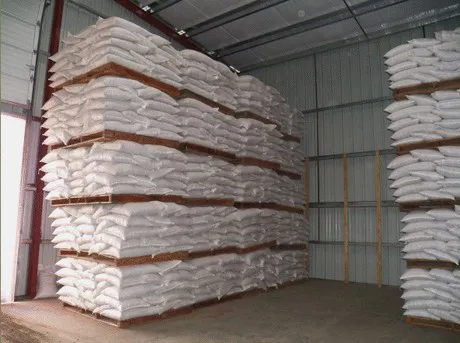Oregon hazelnut growers will begin harvest in the next week or two. Early predictions are for the crop to be very large. The USDA estimate is putting the Oregon crop at 52,000 tons which would make it the highest ever. Early signs are good but growers are cautious, pointing out that predictions can only be realized once harvest begins and processing is underway.
"Harvest is still a week away, with most of the volume starting in several weeks," said Joan Firestone of Firestone Farms in Dayton, Oregon. "Although the pre-harvest estimates indicate it will probably be one of the biggest crops we've ever had, much of this will depend on what harvest conditions are like once it starts. It has been a dry summer so the nuts have been drying on the trees by themselves. It is raining now though which is okay, unless it persists. In that case, it makes harvest much more difficult and can cause other problems like the nuts being wet and muddy as they are brought into the processing facility."
Firestone noted that the makeup of the hazelnut crop is changing as some of the older varieties make way for newer ones. She noted that the Barcelona variety still makes up a large amount of acreage, while the amount of Ennis is dwindling. "There is less acreage of Ennis now, which is a premium variety but highly susceptible to the Eastern Filbert Blight. A significant acreage of the Jefferson variety has been planted. This particular hazelnut was developed by Oregon State University."
Export environment much more complex this year
With the majority of Oregon hazelnuts sent for export, the global trade situation is of great interest to growers. Of course, this year saw the US-China trade dispute increasingly escalate, resulting in China placing an additional 25 percent tariff on US-grown hazelnuts. This is on top of an already existing 25 percent tariff, totaling up to 50 percent. The end result for hazelnut producers is a much more difficult entry to an important market.
"The major concern this year will be the tariffs," Firestone shared. "For many years now, the majority of the hazelnut crop has been exported, with much of that finding its way to China, often through Hong Kong or Vietnam. This year will definitely be tougher and tighter and it remains to be seen just how we will get our product there. So far, we have made some sales but it is definitely much more limited in comparison to previous years. There are still a lot of unknowns which we won't find out until we're actually exporting."

Turkey is the largest producer of hazelnuts in the world and this year, their outlook is for a crop close to the average size. Additionally, with the Turkish Lira at almost half its value from this time last year, conditions are ripe for Turkey to have a strong year. Firestone, however, mentioned that the Turkish and US crops largely go to different markets.
"Much of what Turkey produces go to the kernel market rather than the in-shell market," she said. "This is one of the reasons that the US has been able to develop such a successful in-shell trade. But Italy, France, and some of the former Soviet countries do produce a fair amount of in-shell as well. The market is changing and we hope in-shell customers will still want the high quality product the US has to offer."
Increasing consumption key to hazelnut growth
One of the ways the category can continue to grow is by encouraging increasing consumption. From better marketing to launching new products, there are a lot of options for producers to achieve this. Firestone also believes there are still a lot of undeveloped markets to be tapped.
"The goal is to increase consumption if we want the hazelnut category to grow," she observed. "There are still a lot of potential markets where people have an increasing amount of disposable income and are looking to buy products like hazelnuts. More abundant regular supply will also help. There are a lot of new varieties out there as well as new products that take advantage of the hazelnut's desirable quality and flavor. Many of these new products do primarily use the kernel hazelnuts which can limit the potential for the in-shell nuts."
For more information:
Joan Firestone
Firestone Farms
Tel: +1 (503) 864-3515
ffarms@nwlink.com
www.firestonefarms.net
